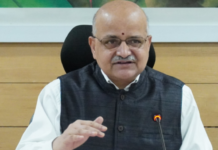New Delhi– With inflation likely to exceed 6 per cent for three consecutive quarters, especially if energy prices remain elevated, the RBI is likely to get quite perturbed, Emkay Global Financial Services said in a report.
With higher food price pressure in the near term (summer effect, international prices, higher transport cost, supply chains) and persistent input cost pressure in the non-food segment, it now sees inflation crossing 6 per cent in FY23.
The March ’22 print strengthens rate hike expectations in June ’22. We maintain that FY23 could see a rate hike of up to 100bps. The terminal rate may go a tad higher from 5.25 per cent, with the RBI now showing its intent to keep real rates neutral, the report said.
March ’22 inflation surged to near 7 per cent, reflecting a broad-based increase in food and non-food inflation. Perishable food items seem to have been hurt by higher transportation and fuel costs. We are unlikely to see any relief in food prices in the near term, as supply-chain price pressure and summer months further weigh in, the report added.
Core inflation at 6.6 per cent depicted the persistence of input cost pressure, which has started to percolate to output prices.
The Mar’22 inflation print exceeded the RBI’s target range materially, and the next two quarters are also likely to exceed 6 per cent, which could pressure the RBI to act sooner than later. We are tracking April ’22 inflation at 7.2 per cent, albeit peaking, assuming pump prices stabilize ahead. With food prices looking high in the near term (summer effect, international prices, higher transport cost, supply chains) and persistent input cost pressure in the non-food segment, we now see inflation crossing 6 per cent in FY23.
The RBI reckoned that inflation has again taken precedence over growth in its reaction function. With inflation realities worsening, June hike is likely (with or without stout and formal stance change). FY23 could see rates go up by 100bps. The terminal rate may be a tad higher than 5.25 per cent, with the RBI now showing its intent to keep real rates neutral. (IANS)







